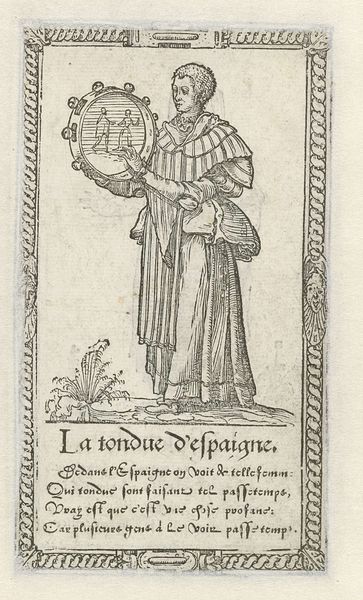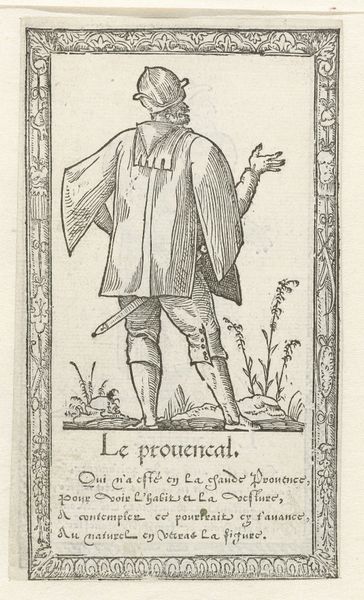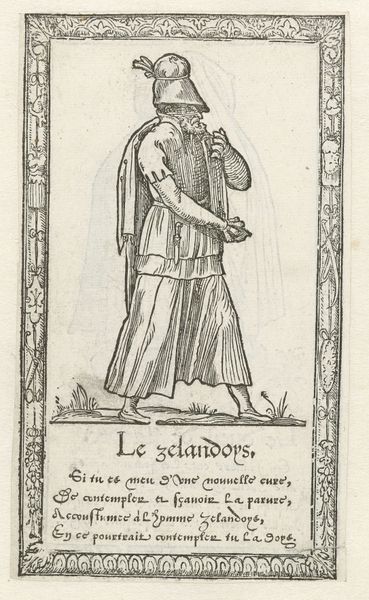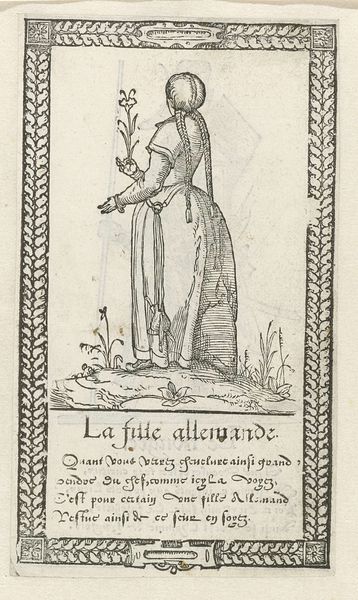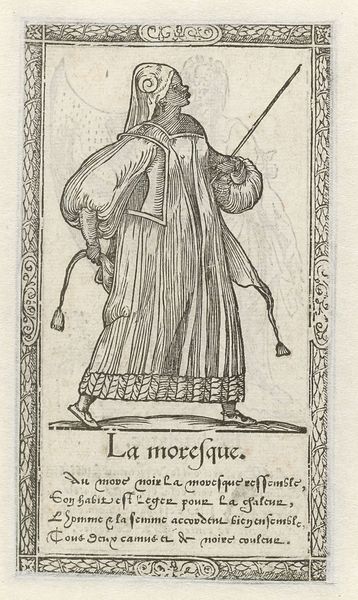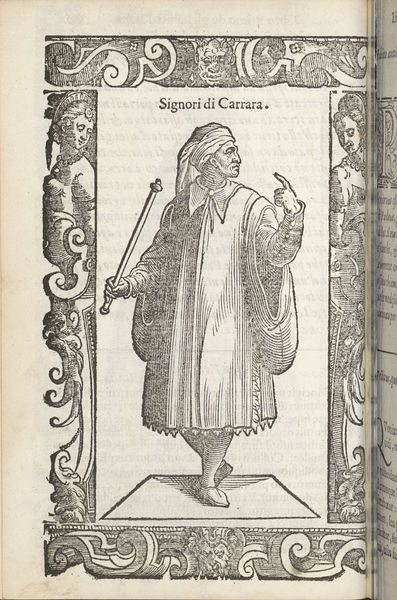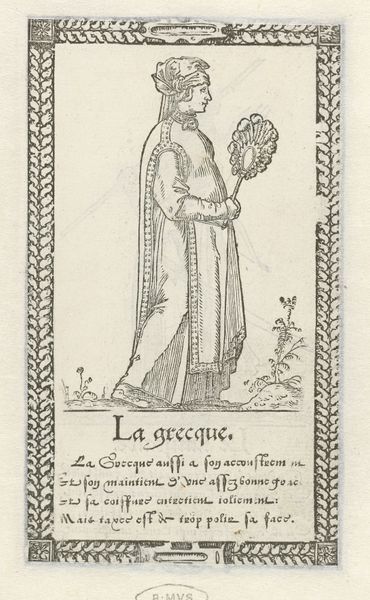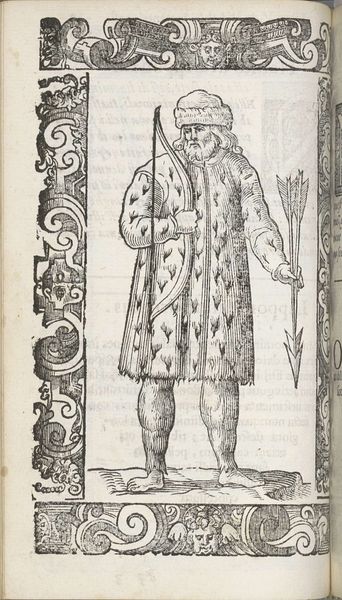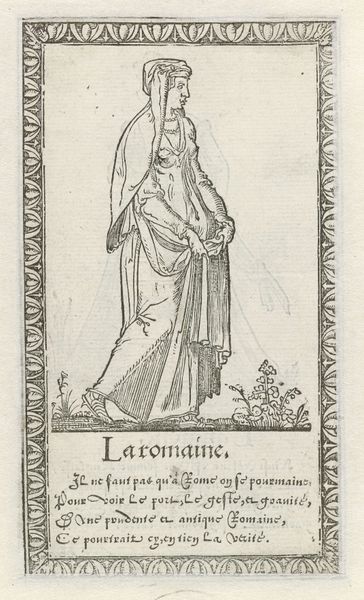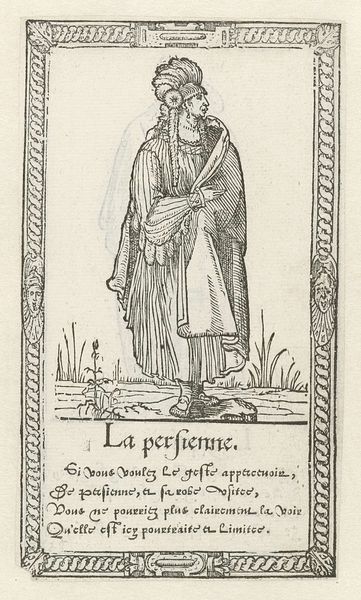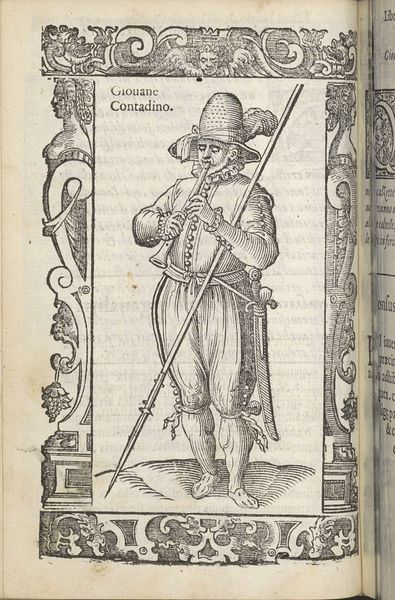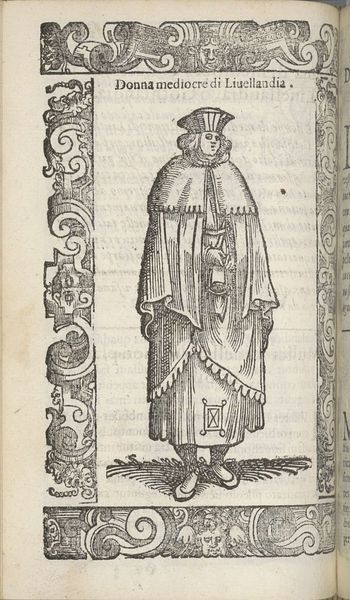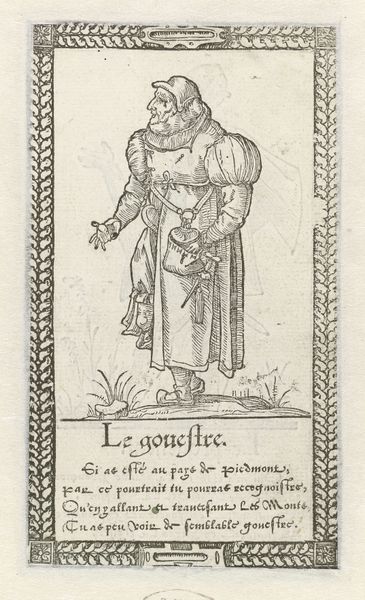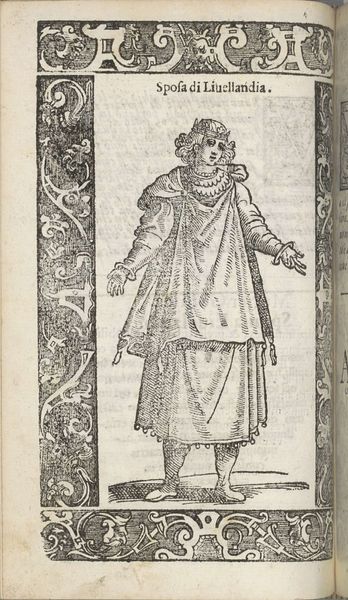
print, engraving
#
medieval
# print
#
old engraving style
#
figuration
#
line
#
history-painting
#
academic-art
#
engraving
Dimensions: height 146 mm, width 86 mm
Copyright: Rijks Museum: Open Domain
Curator: This is an engraving titled "Man uit Rio de Janeiro" created in 1562 by François Desprez. Editor: It's fascinating how much information is conveyed through these thin, precise lines. The figure is strangely poised, with a slightly melancholy aura. The surrounding border feels equally important—not just a frame. Curator: Indeed, the meticulous lines of the engraving, particularly in the figure’s clothing and the decorative border, point to the printmaking processes and artisanal skills prized at that time. The use of printmaking allowed for wider circulation of images. Do you see how this work functions in a cultural context of the 16th century? Editor: I find the contrast between the supposed subject—a man from Rio de Janeiro—and the rather European style intriguing. What’s the relationship between the image and the culture that produced it, and the place it depicts? Curator: Absolutely. The symbols at play are fascinating! "Le Nictorien," or the "Victorious One," coupled with the figure’s ambiguous gesture, creates a symbolic tension. He holds a staff but extends his open hand—a gesture of invitation, or perhaps supplication? We can look at such representations as crucial tools for encoding cultural memory, creating symbolic ties between places, figures, and ideas. Editor: The details of his garments seem…not particularly 'Rio de Janeiro.' The construction of the layered fabrics, the way they drape – you can almost feel the weight and the texture that contrast sharply with the printed nature of the medium. It almost seems like the engraver is concerned more with their access to the fabrics, or images of the fabrics, rather than to a figure themselves. Curator: A thought-provoking insight. The layered fabric is a clue to the European reception and understanding, and thus reshaping, of non-European cultures. Perhaps he represents the idealized "noble savage"? Editor: Or simply highlights the skewed, self-centered view that underpinned European colonialism. What seems more real to the artist: their cultural projections, or their subject? It raises important questions. Curator: Well said! This engraving prompts us to examine not only what is depicted, but also the material conditions and power dynamics behind its creation and distribution. Editor: And to appreciate how such simple means could package and disseminate such loaded and layered information. It's far more intricate than it seems at first glance.
Comments
No comments
Be the first to comment and join the conversation on the ultimate creative platform.
